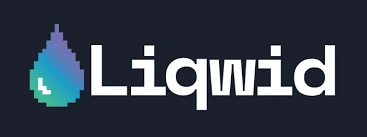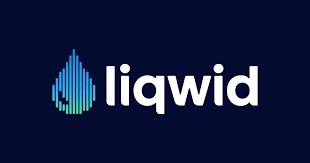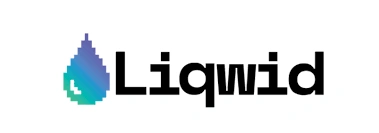Liqwid Finance LQ: DeFi Lending & Borrowing on Cardano
Table of Contents

Imagine tapping into the power of decentralized finance on the Cardano network — seamlessly lending your assets, borrowing against them, and earning yield without giving up control. That’s exactly what Liqwid Finance is enabling. As the first non-custodial liquidity protocol built for Cardano, Liqwid opens a gateway for lenders, borrowers, and governance participants alike. In this article, we’ll unpack how Liqwid works, why the LQ token matters, and what users stand to gain. Whether you’re a Cardano enthusiast, DeFi explorer, or token-holder seeking utility, this deep dive will guide you through lending markets, borrowing mechanics, yield opportunities, risk considerations, and the future roadmap. Ready to explore how Liqwid is reshaping liquidity on Cardano? Let’s dive in.
For more insights and updates on the latest trends in cryptocurrency, be sure to check out our Nifty Finances platform, which serves as your gateway to smarter financial decisions in the digital economy.

What is Liqwid Finance and the LQ Token?
Liqwid Finance is a non-custodial liquidity market protocol built on the Cardano blockchain, designed to empower users with decentralized lending and borrowing services. Unlike traditional financial systems that rely on intermediaries, Liqwid enables users to supply, borrow, and earn interest on digital assets in a fully trustless and transparent environment. By leveraging Cardano’s secure and efficient infrastructure, Liqwid aims to deliver quick, affordable, and inclusive lending facilities accessible to anyone in the world.
Defining Liqwid Finance: A Next-Gen Lending Protocol
At its core, Liqwid Finance functions as a peer-to-peer money market where users can seamlessly earn yield or access liquidity without surrendering control of their assets.
- Lenders (or suppliers) deposit Cardano-based tokens into liquidity pools and earn interest passively.
- Borrowers can take over-collateralized loans instantly, using their crypto holdings as security.
- Smart contracts handle the entire process — from loan issuance to interest accrual — removing any need for centralized control.
Liqwid’s architecture is non-custodial, meaning users retain full ownership of their assets while participating in lending markets. This model reflects the broader mission of decentralized finance: to democratize access to credit and yield opportunities.
The Role of the LQ Token
The LQ token is the governance and utility token that drives participation and decision-making within the Liqwid ecosystem.
Key functions of the LQ token include:
- Governance: LQ holders can propose and vote on protocol upgrades, interest rate models, risk parameters, and new asset listings — ensuring community-driven control.
- Staking and Rewards: By staking LQ, users can earn a share of protocol fees generated from borrowing and lending activities.
- Fee Distribution: Active participants in governance and staking receive incentives as a reflection of their role in maintaining the protocol’s health.
- Liquidity Support: LQ is also used to incentivize liquidity provision, helping ensure markets remain deep and efficient.
Through LQ, Liqwid aligns incentives between users, stakers, and developers, creating a sustainable and community-governed ecosystem.
Why Cardano Matters
Liqwid’s foundation on Cardano gives it distinct advantages over other DeFi platforms. Cardano’s EUTXO (Extended Unspent Transaction Output) model and Plutus smart contracts ensure deterministic execution, enhanced scalability, and lower transaction costs — essential traits for financial applications.
Cardano’s design allows Liqwid to:
- Offer predictable fees and fast settlement times.
- Integrate seamlessly with native Cardano assets (ADA, stablecoins, synthetic tokens).
- Ensure high security and auditability through its formally verified smart contract framework.
By building on Cardano, Liqwid Finance benefits from a blockchain engineered for sustainability, interoperability, and global inclusion — aligning perfectly with the platform’s mission.
Mission: Quick, Affordable, and Inclusive Lending
Liqwid Finance’s official mission centers around providing “quick, affordable, and inclusive lending facilities” to users across the globe. Traditional credit systems often exclude individuals without banking access or collateral in fiat terms. Liqwid removes these barriers through:
- Open access: anyone with a Cardano wallet can lend or borrow.
- Transparency: all transactions and interest rates are verifiable on-chain.
- Efficiency: automated smart contracts eliminate bureaucracy and delays.
The result is a borderless financial system where liquidity is accessible, yield opportunities are equitable, and governance is decentralized.
Liqwid Finance and the LQ token represent Cardano’s answer to decentralized money markets — combining security, inclusivity, and transparency under a community-governed model. By leveraging Cardano’s technology and the LQ governance framework, Liqwid is not just reshaping DeFi lending; it’s setting new standards for accessibility and fairness in global finance.

How the Protocol Works: Lending, Borrowing & Yield on Liqwid Finance
Liqwid Finance transforms traditional lending and borrowing into a non-custodial, algorithmic, and transparent process built entirely on the Cardano blockchain. It removes intermediaries, replacing them with smart contracts that manage deposits, loans, interest, and liquidations automatically. The result is a frictionless and open financial system where users maintain full control of their assets while earning or accessing liquidity securely.
Supplying Assets: The Lender’s Role
Lenders in Liqwid Finance provide liquidity to the protocol by depositing their Cardano-native assets—such as ADA or stablecoins—into smart contract-based liquidity pools. These assets become available for borrowing while simultaneously earning interest for their providers.
When a user supplies assets:
- The protocol issues qTokens (e.g., qADA or qUSDC), representing the user’s share in the pool.
- Interest accrues automatically in real-time, increasing the redeemable balance of qTokens.
- Lenders can withdraw their principal and earned interest anytime, as long as sufficient liquidity exists in the pool.
This system allows users to generate passive income without losing custody of their assets, creating a yield-bearing opportunity comparable to fixed-income investments—only decentralized and borderless.
Borrowing Assets: The Borrower’s Role
Borrowers can access liquidity instantly by depositing collateral into the Liqwid protocol. Borrowing is over-collateralized, ensuring system stability and minimizing default risk.
Here’s how borrowing works:
- The borrower locks supported assets (e.g., ADA or other tokens) as collateral.
- The protocol calculates a collateral ratio, defining how much they can safely borrow (typically 50–75% of collateral value).
- The borrower receives their chosen asset directly from the liquidity pool.
- If the collateral value drops below the liquidation threshold, automated smart contracts liquidate part of the collateral to maintain solvency.
Borrowers pay interest rates that are dynamically adjusted based on the utilization rate of each pool—the ratio between borrowed and supplied liquidity.
Yield Mechanisms and Interest Rate Models
Liqwid’s yield generation is powered by a market-driven interest rate model.
- Interest rates are algorithmically adjusted according to pool utilization — as borrowing demand increases, interest rates rise to attract more lenders.
- Lenders’ yield comes directly from the interest paid by borrowers, ensuring organic and sustainable returns.
- Risk pools and reserves accumulate a portion of protocol fees to cover potential shortfalls, adding a safety layer to the system.
This structure mimics money markets, aligning supply and demand through automated pricing rather than centralized policy.
Protocol Architecture: Smart Contracts & Non-Custodial Design
The entire Liqwid system is governed by Cardano smart contracts written in Plutus, ensuring deterministic and transparent execution.
- Non-custodial: Users maintain ownership of their assets; smart contracts enforce rules without intermediaries.
- Algorithmic interest rates: Rates adjust automatically based on utilization data.
- Security: Formal verification and Cardano’s robust EUTXO model reduce smart contract vulnerabilities.
Every transaction—from deposit to liquidation—is executed on-chain, ensuring verifiability and eliminating counterparty risk.
Comparison with Traditional and Cross-Chain Lending Models
In traditional finance, borrowing often involves intermediaries, credit checks, and manual processes. In contrast, Liqwid Finance allows anyone, anywhere, to lend or borrow instantly with no gatekeepers.
Compared to DeFi protocols on other chains:
- Cardano-based architecture provides lower fees and higher predictability than Ethereum-based markets.
- Formal verification enhances trust and code safety.
- Community governance via the LQ token decentralizes control more effectively than most lending protocols.
Liqwid Finance merges the best of decentralized finance and traditional lending logic into one cohesive system. By automating interest rates, enabling permissionless borrowing, and maintaining non-custodial control, Liqwid redefines what transparent and inclusive lending looks like. It’s a trust-minimized, yield-generating ecosystem where every participant — lender or borrower — benefits from Cardano’s secure and efficient blockchain infrastructure.

Use Cases & Real-World Applications of Liqwid Finance
Liqwid Finance represents one of the most practical and inclusive use cases of decentralized finance (DeFi) on Cardano, giving users access to lending and borrowing opportunities without intermediaries. Through smart contracts, users can supply assets like ADA to earn yield, use their crypto holdings as collateral, and unlock liquidity while staying fully on-chain. This flexibility makes Liqwid a cornerstone of Cardano’s growing financial ecosystem.
Earning Yield: Supplying ADA and Other Assets
One of the simplest yet most powerful use cases for Liqwid is earning passive income through lending. Users can deposit ADA, stablecoins, or other supported Cardano-native assets into Liqwid’s liquidity pools. These assets are then made available for borrowers, and in return, lenders receive a portion of the interest generated from loans.
For example:
- A user deposits 1,000 ADA into a Liqwid pool.
- The protocol issues qADA, a token that represents the user’s deposit and continuously accrues value.
- As borrowers pay interest, the lender’s qADA automatically increases in value — generating passive yield without active management.
This mechanism democratizes earning potential, allowing anyone with digital assets to become a liquidity provider and earn returns traditionally limited to institutional lenders.
Borrowing: Using Collateral to Unlock Liquidity
Liqwid also enables users to borrow stablecoins or other assets by locking their existing crypto as collateral. This opens real-world possibilities for managing liquidity without selling long-term holdings.
For instance, a Cardano holder might deposit ADA as collateral and borrow stablecoins like Djed or iUSD. This allows them to:
- Access liquidity for trading, staking, or real-world expenses.
- Maintain ADA exposure and continue benefiting from its potential appreciation.
- Avoid taxable events that might occur from selling crypto assets.
Such borrowing flexibility mirrors traditional secured lending but with instant execution, no credit checks, and full transparency.
Ecosystem Integration: Fueling Cardano DeFi
Liqwid plays a pivotal role within the Cardano DeFi ecosystem, acting as a liquidity backbone for native assets. Its architecture allows seamless integration with:
- Staking protocols – users can potentially combine staking rewards with lending yields, maximizing returns.
- DEXs and stablecoin platforms – liquidity from Liqwid helps balance decentralized exchanges and improve stablecoin circulation.
- Wallets like Eternl, Nami, and Typhon – users can interact with Liqwid directly from familiar interfaces, making DeFi accessible to non-technical users.
By connecting these pieces, Liqwid contributes to a fluid, interoperable financial network where assets flow freely across use cases — lending, trading, and staking — without leaving the Cardano ecosystem.
Community Growth and User Perspectives
The success of Liqwid Finance is driven by its active and engaged Cardano community. On platforms like Reddit and Discord, users often highlight Liqwid’s transparency, security, and inclusivity as key advantages. Many emphasize that it provides “true DeFi for ADA holders,” combining yield generation with real asset utility.
Community discussions frequently note:
- The ease of use through Cardano-native wallets.
- Confidence in Liqwid’s non-custodial and open-source model.
- Excitement for ongoing updates, including new lending markets and governance features.
This strong user sentiment reinforces Liqwid’s reputation as a community-first project, aligning with Cardano’s ethos of decentralization and equitable access.
Liqwid Finance isn’t just a DeFi protocol—it’s a real-world liquidity engine for Cardano users. Whether earning yield on idle assets, borrowing against crypto holdings, or integrating with other Cardano protocols, Liqwid empowers individuals to participate in an open, transparent financial system. Through its sustainable lending model and community-driven governance, it’s turning Cardano’s vision of inclusive, decentralized finance into a working reality.
How to Get Started: Step-by-Step User Journey on Liqwid Finance
Liqwid Finance offers a seamless way for users to lend, borrow, and stake on the Cardano blockchain. Its non-custodial design ensures users maintain full control of their assets while participating in decentralized money markets. Whether you’re looking to earn passive income, access liquidity, or shape the future of the protocol through governance, getting started with Liqwid is straightforward.
Supplying Assets: Connect, Deposit, and Earn
The first step to using Liqwid Finance is supplying your Cardano-based assets into a lending pool. This process enables you to earn passive yield automatically.
Step-by-step process:
- Connect your wallet – Use a compatible Cardano wallet such as Eternl, Nami, Typhon, or Flint to access the Liqwid app.
- Select an asset – Choose a supported token like ADA, DJED, iUSD, or other native Cardano assets.
- Deposit into a pool – Approve the transaction and supply your tokens into Liqwid’s smart contract pool.
- Receive qTokens – You’ll automatically receive qTokens (e.g., qADA), which represent your share of the pool and accrue interest over time.
- Earn yield – Interest compounds algorithmically, allowing you to earn passively. You can withdraw your assets anytime, as long as there’s available liquidity.
Pro tip: Check the utilisation rate of each pool before depositing — higher utilisation usually means higher returns but may reduce immediate withdrawal availability.
Borrowing Assets: Use Collateral to Access Liquidity
Borrowing on Liqwid allows you to unlock liquidity without selling your holdings. The system uses over-collateralization to ensure safety and stability.
Steps to borrow:
- Deposit collateral – Supply ADA or another supported token as collateral.
- Select borrowing asset – Choose a stablecoin or asset you wish to borrow (e.g., DJED, iUSD).
- Adjust borrowing amount – The platform will show your collateral ratio and liquidation threshold.
- Confirm and borrow – Once confirmed, borrowed tokens are sent directly to your wallet.
- Monitor loan health – Track your collateral health score to avoid liquidation if the asset’s value drops.
Borrowers pay interest dynamically based on the pool’s utilisation rate. Repaying loans restores collateral and halts further interest accumulation.
Pro tip: Maintain a safe collateral ratio — typically above 150% — to protect against market volatility and liquidation.
Staking LQ Tokens & Participating in Governance
The LQ token powers Liqwid’s governance and reward systems. Staking LQ allows you to earn a share of protocol revenue and participate in key decision-making.
How to stake and govern:
- Acquire LQ tokens through DEXs or liquidity programs.
- Stake LQ in the governance dashboard to earn rewards from protocol fees.
- Vote on proposals that shape platform parameters, new market additions, or rate model updates.
Participating in governance not only strengthens community control but also aligns stakers with the platform’s long-term success.
Best Practices & Risk Awareness
To make the most of Liqwid safely:
- Understand utilisation rates – High utilisation can increase both yields and borrowing costs.
- Monitor liquidation risks – Price volatility may affect your collateral ratio. Use Liqwid’s dashboard to track your loan health regularly.
- Diversify assets – Spread deposits across multiple pools for balanced exposure.
- Review documentation – Stay informed via Liqwid’s official Docs, whitepaper, and community tutorials.
Getting started with Liqwid Finance is intuitive and rewarding. From supplying assets for passive yield to borrowing stablecoins or staking LQ tokens for governance, users can fully engage in decentralized finance without relying on intermediaries. By following best practices and staying informed through Liqwid’s transparent documentation, anyone can confidently participate in Cardano’s premier DeFi lending protocol and contribute to a more open and inclusive financial ecosystem.
Liqwid Finance stands out as a powerful DeFi protocol tailored for the Cardano ecosystem — offering lending, borrowing, yield generation, and governance in a non-custodial setting. Throughout this article, we’ve unpacked how the system functions, how the LQ token drives utility, and how real users can engage. While the opportunity is exciting, the success of the protocol hinges on liquidity growth, network adoption, and user education.
If you’re ready to explore Cardano’s DeFi frontier, consider reviewing Liqwid’s official documentation, experimenting with a small deposit, staking LQ tokens, or joining the governance forum. Your journey into Cardano DeFi starts here — stay informed, stay safe, and if you’re ready to dive deeper, now is the time. Millions lack access to credit, with IT AssetStream, TWQ Token, Lendoit, JamFi, and Liqwid Finance offering lending, borrowing.
[…] By leveraging blockchain technology, AssetStream offers an innovative peer-to-peer (P2P) lending platform that enables microfinance with a global reach. Whether you’re an investor or a borrower, […]
[…] sense. Ready to step into DeFi-in-chat? The future might be chatting your way to yield. Imagine Liqwid Finance is a non-custodial liquidity market protocol built on the Cardano blockchain, […]
[…] you’ll play. The next chapter of DeFi is being written, and Dolomite is drafting a strong page. Liqwid Finance is a non-custodial liquidity market protocol built on the Cardano blockchain, […]